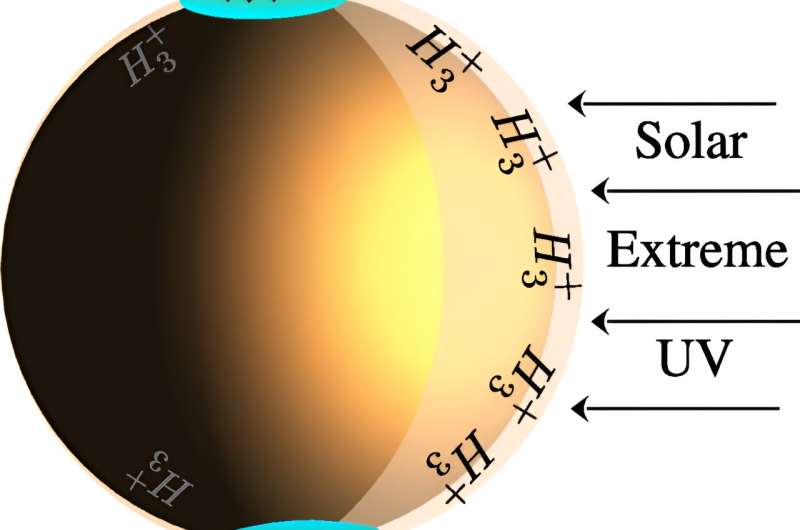
JULY 2, 2024 by Bob Yirka , Phys.org
Collected at: https://phys.org/news/2024-07-infrared-high-jupiter-atmosphere-dark.html
A pair of astrophysicists with Princeton University and the SLAC National Accelerator Laboratory found possible evidence of dark matter particles colliding. In their study, published in Physical Review Letters, Carlos Blanco and Rebecca Leane conducted measurements of Jupiter’s equatorial region at night to minimize auroral influences.
Since it was first proposed back in the 1930s, dark matter has been at the forefront of physics research, though it has yet to be directly detected. Still, most in the field believe it makes up roughly 70% to 80% of all matter in the universe. It is believed to exist because it is the only explanation for odd gravitational effects observed in galaxy motion and the movement of stars.
Researchers posit that it might be possible to detect dark matter indirectly by identifying the heat or light emitted when particles of dark matter collide and destroy each other. In this new study, the researchers found what they believe may be such an instance—light in Jupiter’s dark-side outer atmosphere.
They suggest that dark matter particles are pulled to Jupiter by its strong gravity and collide with its ionosphere. As they do so, the researchers reason, there would likely be instances in which they collide and produce light.
To confirm their theory, the researchers studied data captured by the Cassini probe’s Visual and Infrared Mapping Spectrometer over a three-hour period. More specifically, they looked at measurements of the night-side planet over its equatorial region. That, they believed, would reduce the impact of Jupiter’s aurora.
Among the data, they were looking for evidence of more H3+ than could be explained by other means, because theories have suggested it would be produced by dark matter particles after colliding.
The researchers did find H3+, but it is still not clear if the amounts they measured were more than could have been generated by other means; therefore, they plan to continue their work, hoping to find proof that they were generated by dark matter collisions.
More information: Carlos Blanco et al, Search for Dark Matter Ionization on the Night Side of Jupiter with Cassini, Physical Review Letters (2024). DOI: 10.1103/PhysRevLett.132.261002
Journal information: Physical Review Letters

Leave a Reply